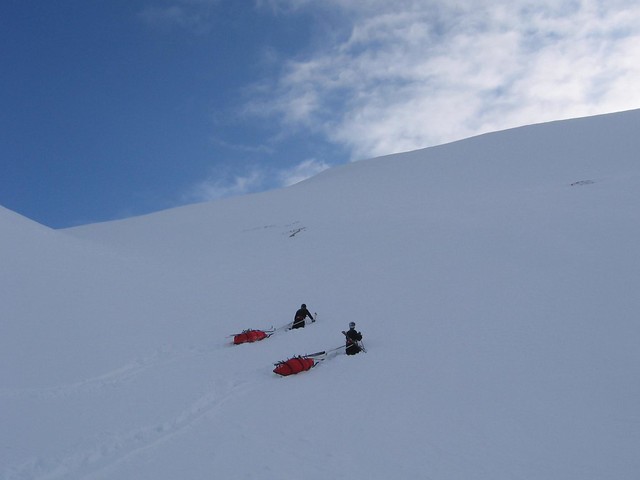The Long Haul is Alex Hibbert’s account of the longest unsupported polar journey of all time*. I had known about Hibbert’s expedition for several years. In fact, I was working in the Royal Geographical Society when he found himself in the peculiar position of having a fully funded expedition in place but no team-mate, and was thus advertising for a partner.
(*Although see the comments section below for the latest records).
I knew that covering 1,374 miles on the Greenland icecap must have been tough but it wasn’t until reading this book that I really began to appreciate just how tough. I think I had made the rather lazy unconscious assumption that Hibbert and his team-mate, George Bullard, had broken the long-distance record simply through stubbornness and carrying on for longer that most people could be bothered. But Hibbert patiently explains in simple terms for the layman, without ever patronising or attempting to blow his own trumpet, just what was involved in this undertaking. Their sleds (or ‘pulks’) weighed close to 200kg when they set off and they were skiing for nearly four months without contact with or support from anyone else.
There are, of course, myriad reasons why no one else had travelled that far before, even with dog or kite support. For starters, polar journeys seem to be about attrition: getting to your goal before the elements and hardship wear you down, before you lose too much muscle mass to keep moving, your aches turn to injuries, you let your guard down and get a bit of frostnip which worsens with time, or your mind just gets the better of you after months of sensory deprivation. Hibbert and Bullard had to endure all of this and more than anyone else.
In the back of my mind I also figured that since their goal was purely one of distance, it didn’t matter how long they took or how many rest days they enjoyed. This too was not the case because they had to maintain a very delicate balance: too fast and their pace would be unsustainable for that large a distance, too slow and they would have had to carry more supplies than they could physically drag. As such, they were constantly pushing their limits of how hard and fast they could manage.
But the book is more than just an account of physical hardship in the Arctic. It is so abundantly clear from the outset that Hibbert is deeply passionate about his subject and holds very strong principles about how expeditions should and should not be conducted. This was not a ‘get rich/famous quick’, one-off jolly to produce a fancy website and secure a book deal for Hibbert, this was something he yearned for and something which he took very seriously.
The book was a real page turner for me and, for the duration of its reading, I felt I was living a double existence with one life in London and another on the Greenland ice cap. Highly recommended.
[divide]
You can by The Long Haul from Amazon or signed by the author.

What do you think? Please do add your thoughts below…